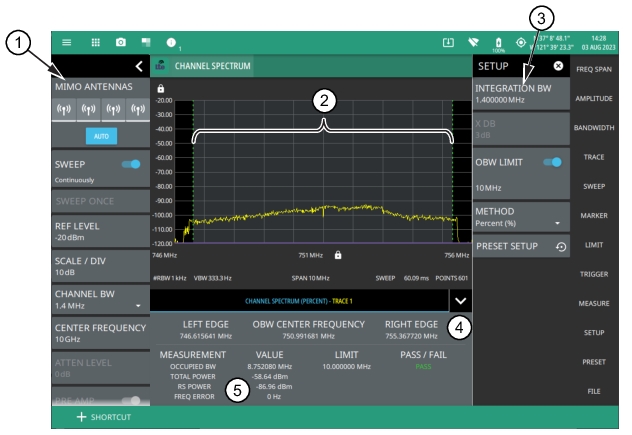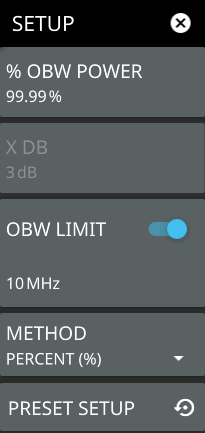 |
1. LTE Channel Spectrum Analyzer Status Panel: Each measurement features a unique status panel that displays settings and information relevant to the current measurement and view settings. This panel provides quick access to the measurement frequency and band configuration. See Status Panel (LTE Channel Spectrum). 2. Occupied Bandwidth: Occupied bandwidth is integrated over the shaded region where the dashed green lines indicate the upper and lower frequency thresholds. The analyzer will determine and track the occupied bandwidth of the signal within the current span. 3. SETUP Menu: The occupied bandwidth settings are configured in the SETUP menu. See SETUP Menu (LTE Channel Spectrum). 4. Marker frequency values for OBW center, upper and lower frequencies. 5. OBW Summary: This area shows the occupied bandwidth measurement summary data and pass/fail test results, when enabled: • The occupied bandwidth value and the test limit are expressed in frequency units with a pass/fail result. • The total power is integrated over the measured bandwidth and is expressed in dBm. • The received signal power is expressed in dBm. • The transmit signal frequency error is expressed in frequency units (Hz). • Tapping this summary area opens the OBW SETUP menu. |
